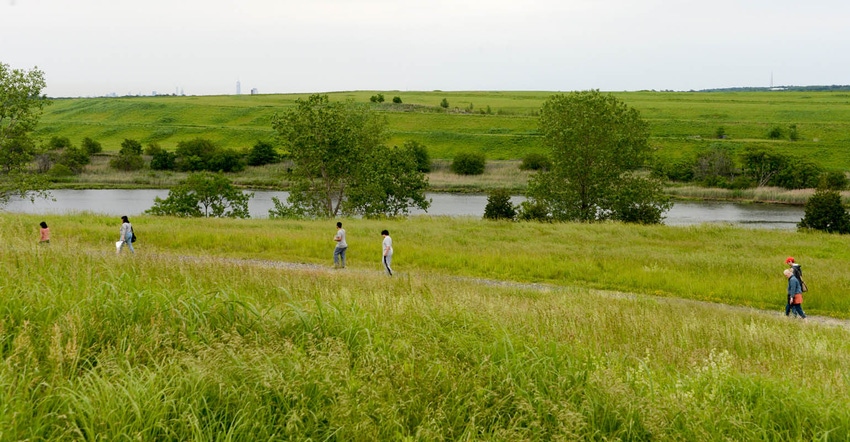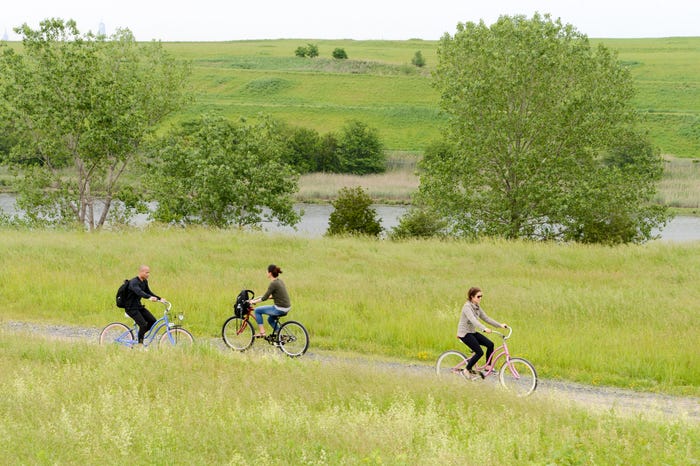Innovative projects have sprung up over the years that house retail, apartments, golf courses, conference centers and hotels.

Developers have been converting closed landfills to other uses for decades, but for some time, they often ran up against site-related restrictions limiting what they could do with these sites. Today, engineering and design techniques have advanced to the point that a landfill could be converted to almost any real estate type—at least if the economics worked out.
In the past two years especially, there has been an uptick in projects, happening mostly in urban areas with strong real estate markets and scarce open space. One of the most high-profile conversions currently underway is New York City’s Freshkills Park, which will be three times the size of Central Park and sprawl one of the world’s largest, now defunct landfills.
But plenty of innovative projects have sprung up over the years that house retail, apartments, golf courses, conference centers and hotels, with one such complex using landfill gas to heat the hotel.
Shoreline Park in Mountain View, Calif., features an 18-hole golf course, clubhouse, restaurant and historical building for events as well as an amphitheater where spectators on the lawn literally sit on trash, though they would have no idea, says Pat Sullivan, senior vice president of SCS Engineers.
“To build these projects, you have to address issues like landfill settlement, which occurs more in some places than others,” says Sullivan. “So, parks and golf courses are among the most common redevelopments as they need open space and settlement affecting elevation is not an issue.”
It’s possible to design uses that must be flat, but there will be ongoing maintenance. Plus, designing and building for structural stability could run millions of dollars.
Another issue is keeping landfill gas out of structures, which requires installing methane protection systems and methane monitoring systems, putting membranes beneath foundations and sealing penetrations.
Engineers in the solid waste space are applying several structural design techniques that other industries have leveraged for years like building on piles, which has historically been done on marshlands and other unstable ground. They’re also designing floating foundations that allow for movement and making adjustments when differential settlements happen.
Over the years, SCS has designed landfill-related systems for 15 to 20 projects, mainly apartments, business complexes, entertainment complexes, hotels, parks and golf courses. In the past three years, the company has fielded calls from about 25 developers looking into options, resulting in five projects that have since moved into development stages.

The Freshkills project, which involves 2,200 acres of a closed landfill, began early planning stages 12 years ago. The first three sections are open, and the rest will roll out over the next 18 years.
Some features are athletic fields, kayak launches, horseback riding trails and art installations. There will eventually be a marina, waterfront dining and possibly a ferry service.
The landfill, which closed in 2001, has a long, controversial history.
“Staten Island neighborhoods that bordered the landfill [notorious for odor] loathed this dump. Freshkills was a defining attribute of this borough, and it left a scar on the community for 50 years, up until 2001,” says Eloise Hirsh, Freshkills park administrator.
The city began hosting tours and events and handed out materials with a basic explanation of what goes into building a landfill.
“We pointed out there has been a tremendous return of wildlife to this area, and it has the largest supply of grasslands in the region, which are important for avian habitat,” says Hirsh.
There have been landfill-related issues to address, such as final cover and stormwater systems.
“The planting soil layer is of special interest as the material must conform to the most restrictive New York State Department of Environmental Conservation residential standard, and we must be able to grow grass without external watering and with minimal erosion [to avoid leachate],” says Ted Nabavi, director of waste management engineering for the New York City Department of Sanitation.
Stormwater had to be routed to basins through stormwater control swales to manage runoff. This will entail ongoing maintenance of the swales, some of which are several thousand feet long with minimal slopes, says Nabavi.
Hirsh says the park department makes sure to explain to the public that these amenities stand on an engineered site.
“We want them to understand it’s been carefully designed and built. This is despite the fact that it does not look engineered,” says Hirsh “When they come, they see it’s what a natural park should be and are blown away by the beauty.”
About the Author(s)
You May Also Like




